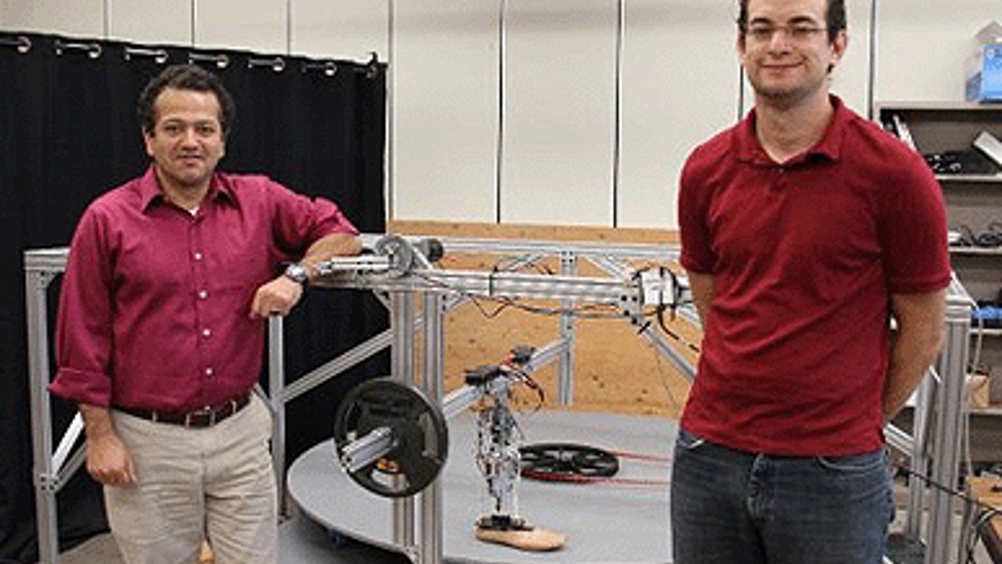New prosthesis aims to restore natural gait to amputees
Researchers at Michigan Technological University are creating a bionic foot that could restore natural gait to amputees.

Mo Rastgaar, an assistant professor of mechanical engineering–engineering mechanics, and PhD student Evandro Ficanha are working on a microprocessor-controlled ankle-foot prosthesis that is claimed to come close to achieving the innate range of motion of this highly complex joint.
These computerised artificial legs have pressure-sensitive sensors on the bottom of the foot that detect how the amputee is walking. The sensors instantaneously send signals to a microprocessor, which in turn adjusts the prosthesis to make walking more natural.
The microprocessor-controlled prostheses on the market can move an artificial foot in only one direction, toe up and toe down, which is fine if you are marking time on a treadmill, Rastgaar said in a statement.
‘But in reality, we never walk in a straight line for any length of time,’ he said. ‘When you walk and reach an obstacle, you have to turn, and there’s always something in our way.’
Rastgaar and Ficanha designed an ankle-foot that can move on two axes, incorporating a side-to-side roll as well as raising the toe up and down. They moved the power and control mechanism up and away from the leg using a cable-driven mechanism, thereby lightening the prosthesis and making it more comfortable and easy to use.
Register now to continue reading
Thanks for visiting The Engineer. You’ve now reached your monthly limit of news stories. Register for free to unlock unlimited access to all of our news coverage, as well as premium content including opinion, in-depth features and special reports.
Benefits of registering
-
In-depth insights and coverage of key emerging trends
-
Unrestricted access to special reports throughout the year
-
Daily technology news delivered straight to your inbox










Water Sector Talent Exodus Could Cripple The Sector
Maybe if things are essential for the running of a country and we want to pay a fair price we should be running these utilities on a not for profit...